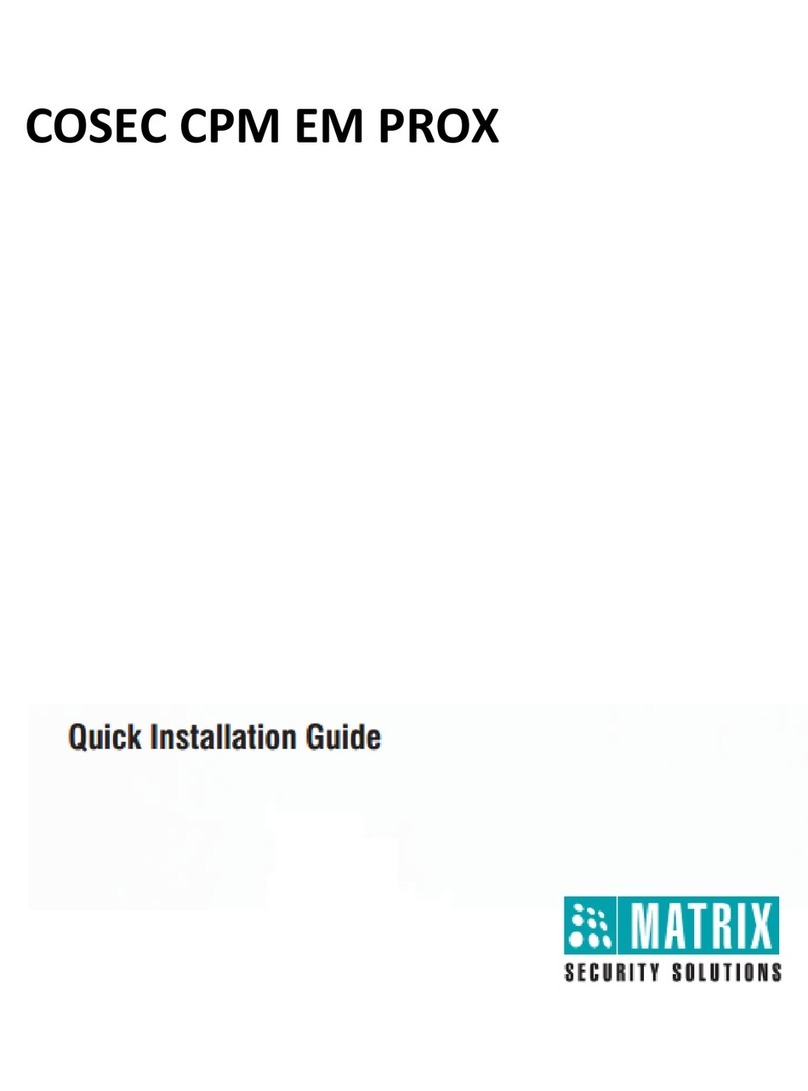
IMPORTANT SAFETY INSTRUCTIONS
When using your COSEC CPM MIFARE SMART Reader, basic safety precautions should always be
followed to reduce the risk of fire, electrical shock, and injury to persons. In addition, the following
should also be followed:
1. Read and understand all instructions.
2. Follow all warnings and instructions marked on the product.
3. Do not use liquid cleaners or aerosol cleaners. Use a damp cloth for cleaning. If necessary, use mild
soap.
4. Do not use this product near water, such as bath-tub, wash bowl, kitchen sink, laundry tub, in a wet
basement, or swimming pool.
5. This product should be operated only from the type of power source indicated on the marking label in
the end/host product. If you are not sure of the type of power supplied to your installation site, consult
your dealer or local power company.
6. Never push objects of any kind into this product or through the cabinet slots as they may touch
voltage points or short out parts that could result in fire or electric shock. Never spill liquid of any kind
on the product.
7. To reduce the risk of electric shock, do not disassemble this product by yourself, but take it to
qualified service whenever service or repair is required. Opening or removing the covers may expose
you to dangerous voltages or other risks. Also, incorrect reassembly can cause electric shock when the
unit is subsequently used.
8. Unplug this product from the Direct Current (DC) power source and refer to qualified service
Personnel under these conditions:
a. When the power supply cord or plug is damaged or frayed.
b. If liquid has been spilled on the product.
c. If the product does not operate normally after following the operating instructions in this manual.
Adjust only those controls that are covered by the operating instructions in this manual. Improper
adjustment of other controls that are not covered by this manual may damage the unit and will often
require extensive work by a qualified technician to restore normal operation.
d. If the product exhibits a distinct change in performance.




























